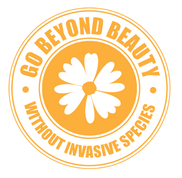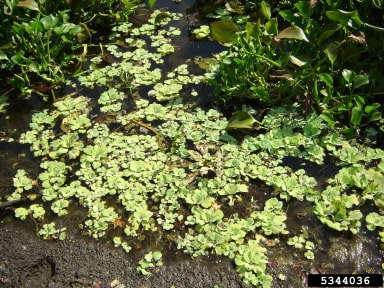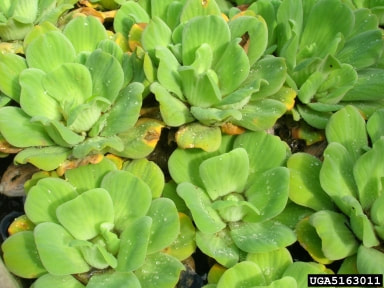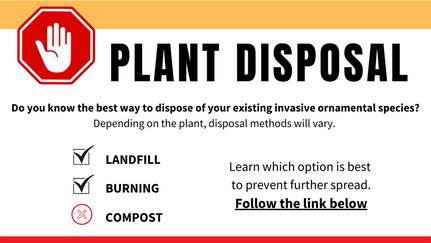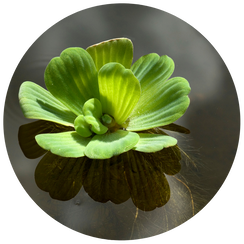|
Water Lettuce
Pistia stratiotes Also known as tropical duckweed, water lettuce is an aquatic plant that can still be purchased for water gardens. While it is more likely to escape cultivation in warmer climates, water lettuce is a Michigan "Watch List" species as it has the potential to spread widely and cause significant ecological damage.
Free floating, in the shape of a rosette, it looks like a head of lettuce - as its name suggests. It produces small, white/green flowers and has a mass of feather-like roots that suspend below the leaves. Water lettuce can become quite aggressive and form a dense mat over the surface of the water. This prevents any sunlight from reaching submerged plants. They die and begin to decay which depletes the amount of dissolved oxygen in the water. Overall, this can have a significant impact on the overall health of an ecosystem. Photo Credits: Forest and Kim Starr, Starr Environmental, bugwood.org | Leslie J. Mehrhoff, University of Connecticut, Bugwood.org | Graves Lovell, Alabama Department of Conservation and Natural Resources, Bugwood.org | Karen Brown, University of Florida, bugwood.org
Learn More About Water Lettuce:
|
Water Lettuce Facts
Management Options
|
|
Created by the Northwest Michigan Invasive Species Network
|
Go Beyond Beauty is funded by the Michigan Invasive Species Grant Program (MISGP)
|
